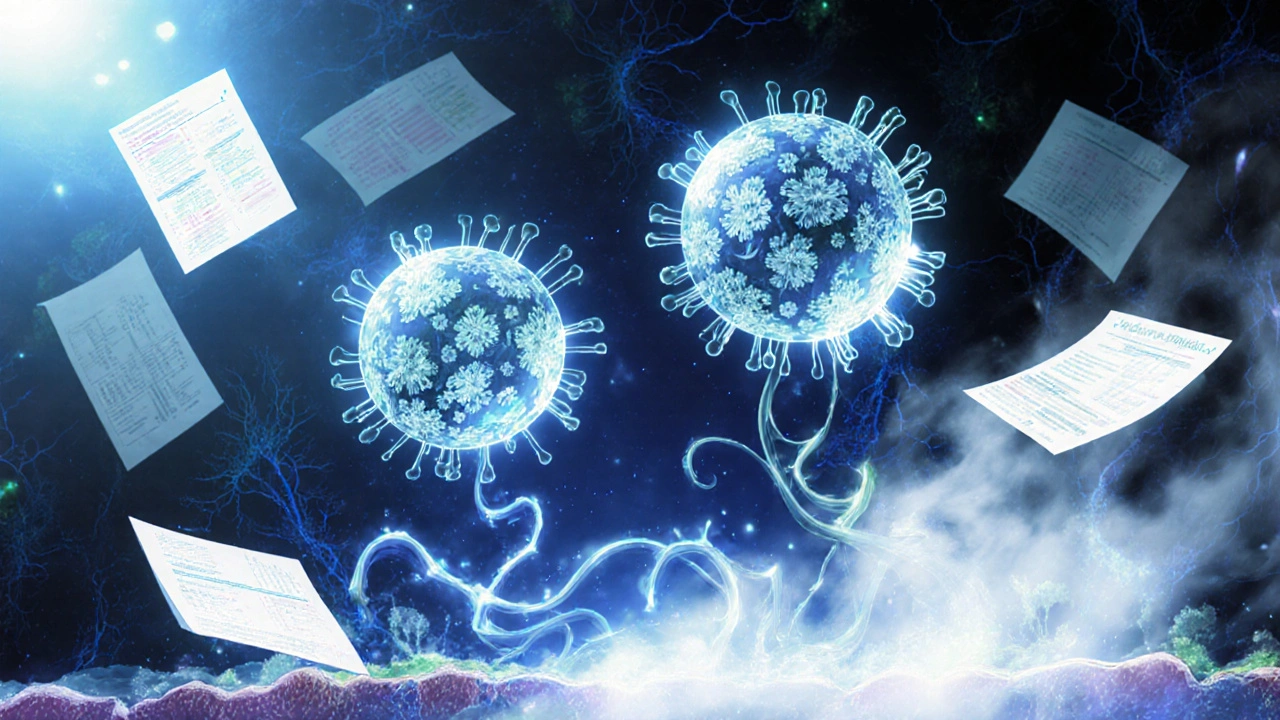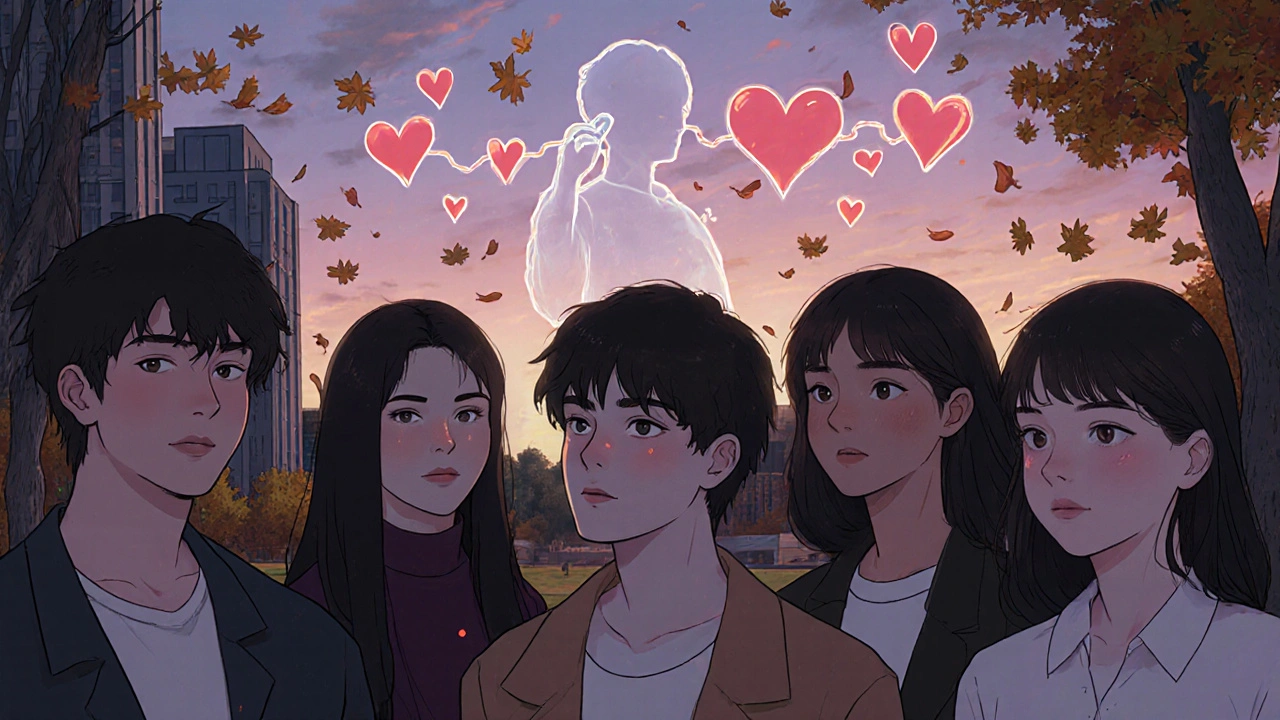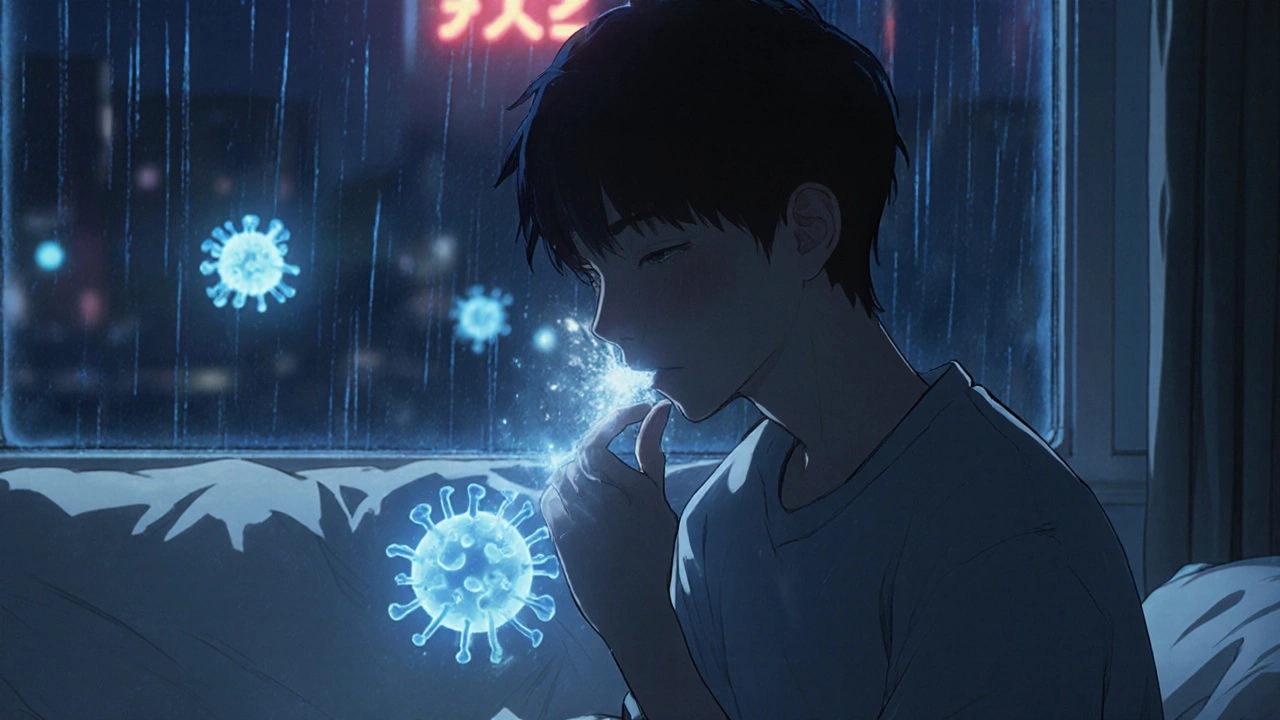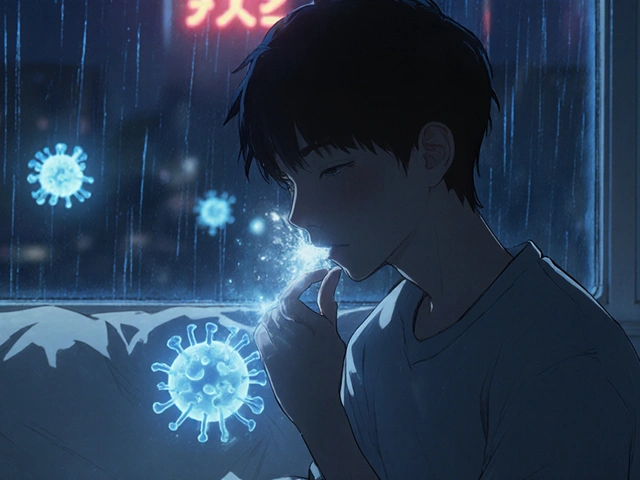Most people don’t realize that nearly 7 out of 10 adults under 50 carry one type of herpes virus. It’s not rare. It’s not shameful. It’s just common - and often misunderstood. Herpes simplex virus (HSV) isn’t just about cold sores or genital outbreaks. It’s a lifelong infection with two distinct forms, each behaving differently in the body, and we now have effective ways to manage it - not cure it, but control it. If you’ve ever had a tingling lip, a painful blister, or been told you have "herpes" without knowing what that actually means, this is for you.
Two Viruses, One Name: HSV-1 vs HSV-2
There are two types of herpes simplex virus: HSV-1 and HSV-2. They look almost identical under a microscope - both are enveloped, double-stranded DNA viruses about 180-200 nanometers wide. But they behave very differently in real life.
HSV-1 was first isolated in 1942 and is best known for causing cold sores around the mouth. About 3.7 billion people under 50 - two-thirds of the global population - have it. Most get it as a child through kissing, sharing utensils, or even a hug from a relative with a cold sore. But here’s the twist: HSV-1 is now responsible for 30-50% of new genital herpes cases in high-income countries. That’s not a typo. Oral sex can transmit HSV-1 to the genitals, and it’s becoming the leading cause of genital herpes in younger adults.
HSV-2, isolated in 1956, is more closely linked to genital infections. Around 13% of people aged 15-49 have it - that’s nearly 500 million people worldwide. It prefers the genital area, hides in the sacral nerves near the base of the spine, and tends to reactivate more often than HSV-1. About 70-80% of genital herpes cases are still caused by HSV-2, and it recurs on average 4-5 times a year. HSV-1 genital infections, by contrast, recur only 0.2-0.5 times per year in most people.
Both types can infect the eyes, brain, or skin. But HSV-1 causes 98% of herpes keratitis - a corneal infection that leads to 50,000 cases of vision loss each year in the U.S. alone. HSV-2 is the main culprit in neonatal herpes, especially when a mother has an active outbreak during delivery.
What Does an Outbreak Actually Look Like?
Herpes doesn’t always show up as a big, obvious blister. Sometimes, it’s just a slight itch or a tiny red spot. But when it does flare, the pattern is predictable.
After exposure, there’s an incubation period of 2-20 days (usually around 4 days). Then comes the prodrome - that warning sign many people learn to recognize: tingling, burning, or itching in one spot. For recurrent HSV-1, this lasts less than 6 hours. For HSV-2, it can last longer - sometimes up to a day.
Then the blisters appear. Small, fluid-filled bumps, clustered together, on a red base. They’re usually 0.5-1.5 cm across. Within a few days, they burst, turn into open sores, then crust over. Healing takes 7-21 days. Scarring is rare. The whole process is painful - especially the first time.
Primary orolabial HSV-1 in kids often looks like herpetic gingivostomatitis: fever up to 40°C, mouth full of ulcers, bad breath, trouble swallowing. About 5-10% of these kids end up in the hospital because they won’t drink or eat. Primary genital HSV-2 is even more intense: 93% have painful ulcers, 78% feel burning when peeing, 65% have swollen lymph nodes in the groin, and 40% get fever and muscle aches.
Recurrent outbreaks are usually milder. Pain drops from a 7/10 to a 4/10 on average. Lesions are fewer. Healing time shrinks from weeks to days. Many people don’t even notice them - just a tiny red bump that disappears in 2-3 days.
How Is It Diagnosed?
Doctors don’t just guess anymore. If you have blisters, a swab from the sore can be tested with PCR - a lab method that detects the virus’s DNA. It’s 95-98% accurate and gives results in 1-3 days. Viral culture, the old standard, is only 70-80% accurate and takes longer.
If you don’t have symptoms, but want to know if you’re infected, a blood test can check for antibodies. Type-specific tests like HerpeSelect ELISA or EUROIMMUN’s recomLine HSV IgG look for antibodies to HSV-1 or HSV-2’s unique gG proteins. These are 97-98% accurate if taken at least 16 weeks after exposure. Before that, results can be misleading.
Here’s the hard truth: only 19% of Americans with HSV-2 know they have it. Most never get tested because they never had symptoms - or they thought it was a pimple, yeast infection, or razor burn. Asymptomatic shedding happens regularly, especially with HSV-2. People can spread the virus even when they feel fine.

Antiviral Therapy: What Works and What Doesn’t
There’s no cure. But antiviral drugs make a huge difference. Three main drugs are used: acyclovir, valacyclovir, and famciclovir. They don’t kill the virus. They stop it from copying itself.
For a first outbreak, the CDC recommends acyclovir 400mg three times daily for 5-10 days. Valacyclovir 1g twice daily for 7-10 days works just as well and is easier to take. These cut healing time in half - from 19 days to 10 - and reduce pain from 12 days to 8.
For recurrent outbreaks, taking the same drugs at the first sign of tingling can stop the blister from forming. Studies show 82% of users on Drugs.com report outbreaks lasting only 2-5 days with early treatment. If you wait more than 72 hours, the benefit drops by 50%.
For people with frequent outbreaks (more than 6 per year), daily suppressive therapy is the gold standard. Valacyclovir 500mg once daily reduces HSV-2 transmission to partners by 48%. It also cuts outbreaks by 70-80%. For HSV-1 genital infections, this isn’t always needed - only 25% of people have more than one recurrence a year.
For immunocompromised patients - those with HIV, cancer, or organ transplants - higher doses are needed. IV acyclovir at 5mg/kg every 8 hours is standard. For herpes encephalitis, it’s 10mg/kg. Foscarnet is used if the virus becomes resistant to acyclovir - which happens in about 10% of HIV patients with very low CD4 counts.
For herpes eye infections, topical trifluridine drops are used hourly. They cut healing time from 21 days to 14. For neonatal herpes, IV acyclovir is started immediately - and it reduces death rates from 30% to under 5% if treated within 24 hours.
Side Effects, Resistance, and New Treatments
These drugs are generally safe. The most common side effect? Headache. Nausea happens in 15% of users. Kidney problems are rare - but possible in people with existing kidney disease. Always stay hydrated when taking these meds.
Resistance is growing. In transplant patients, 15% of HSV strains now resist acyclovir. That’s why the FDA approved pritelivir in 2023 - a new drug that blocks a different part of the virus’s replication process. In trials, it reduced viral shedding by 87% in 48 hours, compared to 52% for foscarnet. It’s now the go-to for resistant cases.
There are also new vaccines in development. GEN-003 and Simplirix showed 50% reduction in viral shedding in phase II trials. They’re not ready yet, but they’re promising. The real breakthrough might be in diagnostic tools. The HerpeSelect 2 test was pulled in 2022, but EUROIMMUN’s test now fills the gap with 96.5% accuracy.

Living With HSV: Beyond the Medicine
The biggest challenge isn’t the virus. It’s the stigma.
A 2023 survey by the American Sexual Health Association found 74% of people with HSV feel anxiety about being judged. 45% say it’s hurt their relationships. 32% waited over six months to tell a partner.
But here’s what most people don’t say out loud: once you learn how to manage it, life goes on. People on Reddit’s r/Herpes community report that after the first outbreak, they learned to recognize the tingling. They started carrying valacyclovir in their bag. They told partners before sex. They stopped blaming themselves.
One user wrote: "First outbreak lasted 18 days. I couldn’t pee without lidocaine. Now, with daily valacyclovir, I have 2-3 outbreaks a year, each lasting 2 days. I’m in a happy relationship. I’m not ashamed. I just take my pill."
Cost is another barrier. Valacyclovir 500mg costs $35-$60 a month with insurance. Without, it’s $300-$400. Many people skip doses because they can’t afford it. Generic acyclovir is cheaper - but you have to take it three times a day. That’s harder to stick with.
Support helps. ASHA’s hotline gets 12,000 calls a year. CDC’s website gets 3.2 million visits annually. Talking to someone who’s been there - not a doctor, not a pamphlet - makes a difference.
What’s Next?
The World Health Organization now recommends screening pregnant women with recurrent herpes to prevent neonatal infection. If done widely, it could stop 1,200 cases a year in the U.S. alone.
By 2030, experts predict a 30% drop in HSV transmission - thanks to better diagnosis, wider use of suppressive therapy, and fewer people hiding their status. The antiviral market will grow to $4.8 billion by 2028. But the real win won’t be in sales figures. It’ll be in fewer people feeling alone, scared, or ashamed.
Herpes isn’t a life sentence. It’s a chronic condition - like high blood pressure or asthma. You don’t cure it. You manage it. And with the right tools, you live a full, healthy, intimate life.

